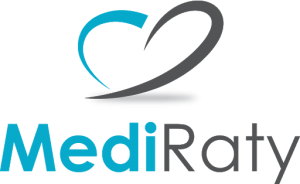Strabismus treatment
PricelistGENERAL INFORMATION
Strabismus is one of the common eye diseases in children and adults. It involves an uneven alignment of the eyeballs, with results in various types of disorders of monocular and binocular vision.
The causes of strabismus can vary widely – they include e.g., birth trauma, refractive errors and anatomical abnormalities of the orbit.
Early diagnosis of strabismus and promptly implemented treatment offer the chance of a full correction of strabismus in a child without surgical intervention. In adults this is usually more challenging and successful treatment of strabismus requires a number of diagnostic and surgical procedures performed in the proper sequence.
Important! Treatment of strabismus in adults is as important as it is in children.
Strabismus in adults is:
⦁ a medical problem that can be solved with effective properly selected treatment. The treatment can remove bothersome and unpleasant symptoms and visual disturbances that, for example, make t it impossible for the patient to work.
⦁ a cosmetic problem that in younger and older people is a cause of complexes or lower self-esteem.
PRACTICAL INFORMATION
In order to qualify for strabismus surgery, you have to undergo a pre-assessment at our Center. During the visit we will take your medical history, perform full ophthalmological exam and the necessary diagnostic tests.
The surgery is painless, it is performed under combined anesthesia. This means cooperation between an anesthesiologist, who administers intravenous sedatives and painkillers, and an ophthalmologist, who administers local anesthesia to the eye.
IMPORTANT for adult patients who undergo strabismus surgery:
- A good cosmetic result after surgical treatment of strabismus can be achieved in a patient of any age.
- Adult patients with internal and neurological conditions (paralytic strabismus) should not give up on surgical treatment.
- Surgery for strabismus accompanying other conditions (such as thyroid disease) may be less effective than expected.
- The effectiveness of the surgery can only be assessed after two to three months. Some patients (regardless of the technique used) may need more than one surgery.
- Sometimes after strabismus surgery the patient may still need to wear corrective glasses to ensure proper vision.
How do we treat strabismus
Celem leczenia zeza jest prawidłowe ustawienie gałek ocznych.
- Leczenie zeza rozpoczynamy zaraz po jego wykryciu.
- Dążymy do poprawy wzroku oka zezującego, wytworzenia fiksacji centralnej i prawidłowej lokalizacji wzrokowej za pomocą różnych metod leczenia.
- Doprowadzamy do równoległego ustawienia oczu, stosując pryzmaty, iniekcje toksyny botulinowej lub zabiegi operacyjne.
- W odpowiednim stadium leczenia przystępujemy do ćwiczeń ortoptycznych oraz ćwiczeń mięśni ocznych.
W Retinie leczymy dorosłych i dzieci z różnymi postaciami zeza.
What does strabismus surgery involve?
Operacja usunięcia zeza polega na wyrównaniu położenia gałki ocznej. W tym celu osłabiamy lub wzmacniamy utrzymujące ją mięśnie. Przygotowanie pacjenta do wykonania operacji zeza zawsze jest poprzedzone wywiadem medycznym przeprowadzonym przez lekarza anestezjologa oraz wcześniejszą konsultacją lekarza okulisty, który zmierzy kąt zeza.
Pre-operative recommendations
- w dniu zabiegu należy przyjechać w wygodnym ubraniu (np. dres), na miejscu w naszej placówce pacjent otrzymuje jednorazowe ubranie medyczne,
- w dniu operacji prosimy nie wykonywać makijażu twarzy ani oczu,
- stale przyjmowane leki należy przyjąć o zwykłej porze, z jednym wyjątkiem opisanym w kolejnym punkcie,
- na 3-7 dni przed operacją należy je odstawić leki rozrzedzające krew. Są to m.in.: Acard, Aspiryna, Aspro C, Asprocol, Polopiryna, Rhonal, Ring N, Solucytel, Thomapyrin, Pradaxa, Xarelto, Plavix, Warfin, Acenokumarol.
Dodatkowe, szczegółowe informacje przekażemy przed umówioną operacją.
Important after strabismus surgery
Po zabiegu pacjent (również dorosły) powinien mieć zapewniony transport prywatny (nie komunikacją miejską) z dorosłą osobą towarzyszącą.
Przez 24 godziny po znieczuleniu nie można kierować pojazdami mechanicznymi, obsługiwać niebezpiecznych urządzeń ani pić alkoholu.
Po operacji nie wolno zanurzać twarzy w wodzie ani moczyć oka, bo grozi to infekcją. Ostrożność w czasie kąpieli należy zachowywać przez 3 tygodnie, do chwili, kiedy rana stanie się wodoszczelna.
Przez 2-3 tygodnie po operacji nie powinno się wykonywać prac wymagających dużego wysiłku fizycznego (na przykład przesuwać ciężkich mebli, czy podnosić ciężarów powyżej 15 kilogramów).
W dni słoneczne należy nosić ciemne okulary.


